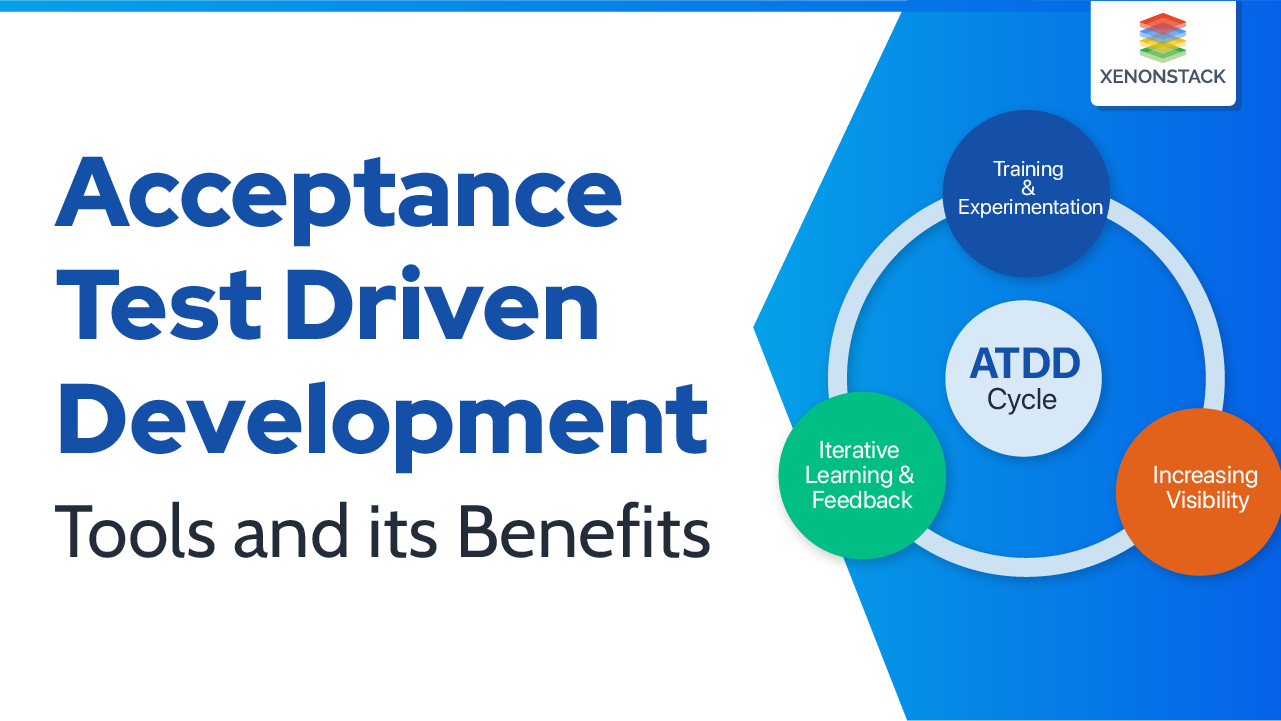
Overview of Shift Left Continuous Testing
The goal is to automate as much of our application testing as possible, maximize our test coverage to the best of our ability, and perform testing early in the development pipeline. As features for the application are produced and automated test scripts are written, I want to ensure they integrate well with the CI tool. Have the test scripts kept running during each build; if they fail, the build should fail. This will ensure that no current features are broken as new code is developed.
The quality assurance and software testing process of software development is as necessary as the actual code had written. Click to explore about, Software Testing Best Practices
What is Shift Left Testing?
In traditional development, testing is performed at the end of the development cycle. Testing, identifying and categorizing issues, and pushing development changes into the product are expensive. The prices may rise if the test/verification team encounters a high-severity issue (release blocker issue) toward the end of the lifecycle. Such issues could even slow down the whole release.
With Shift-Left testing, testing never expands, performed in isolation by the test/verification team, but it has shown in sync with the product development. Shifting left refers to the idea of acting earlier within a process. So, as it identifies to software testing, shift-left testing is the approach of testing the software and moving it to the left in the delivery pipeline—or testing the software before the development lifecycle than is historically typical.
What is Continuous Testing?
Continuous Testing is the procedure of executing automated tests as part of the software delivery pipeline to acquire immediate feedback on the business risks associated with a software release candidate as quickly as possible. It involves executing the right set of tests at the right stage of the delivery pipeline without creating a bottleneck. The Continuous Testing process helps us find the risks, address them, and improve the quality of the product.
A methodology that allows continuous iteration of development and testing all through the software development life cycle. Click to explore about, Role of Automated Testing in Agile Enterprise
Why is Shift Left Continuous Testing important?
-
Improved design Through continuous Shift-Left testing and exhausting brainstorming sessions, roadblock areas, bottlenecks, and possible performance failures were identified in advance. Even though these discoveries may lead to new design options, they are enhanced variants of the original idea.
-
Bugs are Fixed Early-On When we consider how organizational executives usually admit that they “should have” managed the issue early on when it was identified, we understand the significance of Shift-Left testing. It gives more breathing room to handle mistakes after they are spotted, removing the “let’s come back to this once we finish the basic stuff” outlook.
-
Massive Time and Effort Saved When discussing efficiency improvement and quality increments, it would be impractical to hope to accomplish those goals without saving our time and effort! This is another convincing reason to shift testing left.
How Shift Left Testing Works?
“Shift left” refers to a practice in software development in which teams focus on quality, work on problem prevention instead of detection, and begin testing earlier than ever before. Shift Left Testing aims to increase quality, decrease long test cycles, and reduce the possibility of unpleasant surprises at the end of the development cycle—or, worse, in production. Shifting left requires two key DevOps Practices:
Continuous deployment automates the deployment and provisioning of new builds, allowing continuous testing to happen rapidly and efficiently. Continuous testing involves automating tests and running the tests right on time and regularly, as could be expected under the circumstances, along with service virtualization to mimic unavailable systems. The first and most obvious way to shift left operations is to work alongside developers to create deployment and testing processes. Failures observed in production often are not seen earlier in the life cycle. These failures can often be attributed directly to differences in deployment procedures.
Development may create deployment procedures very different from those used by operations for production. Sometimes, production procedures are much more manual, and different tools may be used. Operations and development need to take ownership of building standard deployment procedures. The deployment process is practised hundreds of times in test environments before reaching production.
Another way to reduce the failure rate is to make all environments in the pipeline look as much like production as possible. This is almost impossible using traditional provisioning processes. Production environments are usually much more substantial and detailed than development needs. But by using cloud and pattern capabilities, you can get much closer. The capability to use patterns to describe consistent environments eliminates the failures that occur simply due to configuration inconsistencies. This again requires operations and development to work together in creating the provisioning process, so developers create their test environments the same way they built in production.
Software testing is an important process that ensures customer satisfaction in the application. Click to explore about, AI in Software Testing
What are the benefits of Shift Left Testing?
A role in the shift-left testing as a part of SDLC may have numerous benefits. Below are the most beneficial ones -
Reduced Costs Involved in Development and Testing
In a typical SDLC, testing is performed toward the finish of the product development cycle. As mentioned before, the cost and implications of bug-fixing would multiply based on when it was discovered. Once the shift is left, testing is considered an essential part of each development phase. Thus, testing is performed once every build to catch and fix bugs early. Once the code size increases, fixing simple issues could take additional time and may cause some side effects. A shift-left testing strategy can diminish the overall costs of development, testing, and fixing since bugs have been found recently.
Early Bug Detection Ensures Better Code and Product Quality
The shift-left approach ensures that there is timely correspondence between various project stakeholders. Developers can cooperate on the development of unit tests and system tests. Automation is a fundamental part of shift-left testing, and with automation scripts, test teams can perform testing a few times each day. Their item feedback in the form of bugs is again supplied to the product development channel, which helps improve the code quality. This implies that the overall code quality would be better with stringent code quality checks, ensuring a more stable end-product is delivered to the customer. This means that the overall code quality would improve with strict code quality checks, ensuring a more stable end-product is delivered to the customer.
Penetration Testing is used to evaluate the security of an IT infrastructure. It is a process to identify security vulnerability. Click to explore about, What is Penetration Testing?
Effective resolution of bugs
As mentioned, the Shift-left approach helps coordinate development and testing more effectively. In this way, testing begins way ahead in the development cycle, opening up the software for review and correction directly from the beginning. This is one of the core benefits of the process, which recognizes bugs and fixes them in time. Implementing such approaches in a scenario that needs speed and sustenance is essential.
Enhanced Test Coverage
Considering that the tests are executed directly from the origin of the development process, applications can be evaluated for all their features. The application/software is tested for each functionality and performance. Enhanced test coverage further helps in assuring the quality of the software.
Effective use of time and resources
Whenever bugs or defects are fixed in time, it helps deliver products within stringent timelines and allows effective resource use. When testers work with developers, the overall process helps strengthen the application by efficiently using the skills and delivering results. This further results in cost-effectiveness, which is necessary to sustain commercial profitability.
A process to check the system accepts the requirements of a user or not. Click to explore about, User Acceptance Testing
How to adopt a Continuous Shift Left Testing Approach?
-
Make automation a priority. Do not remove all manual testing tasks; adopt an “automated first” mindset. Concentrate on areas that will run more than once. Fundamentally, set up the plumbing first to let the water flow later without worrying about leaks. Map out your SDLC and identify automation opportunities.
-
Improve the relationship between the tester and each developer. Keep the teams small, encourage inter-team collaboration, and make reports simple to access and share online.
-
Keep track of everything. Use measurements and set pass-fail criteria. Continuous testing immediately identifies whether things are working, so make sure you can set that up quickly. After coding and design, break work down into smaller increments that are easier to test. This makes it easier to automate the tests and makes things much more readily deployable.
-
Develop a system to display your results. Do deep dives into results because that’s how you will know if your code is working and where the gaps are. Define your KPIs and recognition criteria and make them quantifiable. Create dashboards to track the KPIs, including a baseline and subsequent changes.
-
Get the right continuous testing tools. Find the tools that will help develop, test, and analyze regularly. Pick the best-of-breed devices that work together in a way that incorporates easily into the workplace. Keep tools with community-based support where everyone shares their challenges, solutions, and exciting use cases.
TDD is imperative to identify bugs and errors during software development and increase the quality of the product. Click to explore about, Test Driven Development Tools and Process
What are the best practices for Shift Left Testing?
The best practices of Shift Left Testing are listed below:
Identify & Plan Testing Life cycle
Enterprises must identify and plan the entire life cycle before the beginning of the actual development process. This will encourage developers and testers to understand the project's tasks, objectives, and expected outcomes. One method of doing this is identifying testing requirements directly from the project planning and requirements specification stage.
Integrate Development & Project Management Processes with Testing
Another fundamental step in beginning shift-left testing is to coordinate all development, project management, and operations processes with testing. This will assist in understanding where and at which stages testing should occur. It will also help recognize the estimated time, attempt to complete the testing cycle, and avoid unnecessary and duplicated tasks in performing Shift-Left testing.
Define Quality Standards & Controls for All SDLC Stages
It is additionally recommended that usual quality standards be determined and quality controls set up for various phases of SDLC. This will help recognize whether the development process follows QA and identify any deviations from the required outcome. This, in turn, will assist in taking corrective actions at the individual stage, eventually determining the overall well-being of the project.
Encourage Testers to Code
It is likewise advisable for testers to engage in coding knowledge since, regarding testing in sprints, knowledge of code can help them understand and perform a more in-depth analysis of the defects. Moreover, coding knowledge can be useful if testers need to make minor changes or modifications in the code or refactor specific methods rather than depending on developers, which can be time-consuming.
A type of testing in which individual units or functions of software testing. Its primary purpose is to test each unit or function. Click to explore about, Unit Testing Techniques and Best Practices
Plan Departmental Deployments
It is likewise advisable for testers to engage in coding knowledge since, regarding testing in sprints, knowledge of code can help them understand a more in-depth analysis of the defects. Moreover, coding knowledge can be useful if testers need to make minor changes or modifications in the code or refactor specific methods rather than depending on developers, which can be time-consuming.
Define Continuous Feedback Mechanism
It is additionally advisable to define a continuous feedback mechanism so that the testers can consistently give feedback to developers during and after the development step. It likewise becomes easy to report defects and accomplish the desired quality since the chances of errors will be reduced with continuous observation and feedback.
Induce Developers to Code with Testability in Mind
Thinking about the shift, it is also necessary to induce all developers to begin development with testability in mind. Every developer should be responsible for ensuring the quality of the code built. This will help create a reliable testing system and bridge the gap between developers and testers to quicken the testing cycle. Furthermore, developers would know about the solution directly from the development phase.
Engage in Test Automation
To profit from Shift Left testing's most extreme advantages, enterprises are suggested to adopt test automation. With test automation, developers and testers can automate the whole build-to-test process across all the SDLC stages, improving integration between processes, boosting continuous delivery, and driving more belief in each release.

The application consistently tests during each integration with the codebase and before each deployment to another environment. Testing each feature with each build in this manner establishes a specific level of quality in the application that will help ensure an effective production release. It’s simpler to fix a bug if it’s caught earlier in the process, and having the CI build run automated test scripts with each commit on the common codebase will help catch bugs early.
- Learn more about Database Testing
- Get more insights about Big Data Testing
Next Steps in Shift Left Testing Approach
Talk to our experts about implementing compound AI systems and how industries and different departments use Decision Intelligence and the Shift Left Testing Approach to become decision-centric. Discover how AI automates and optimizes IT support and operations, enhancing efficiency and responsiveness.


